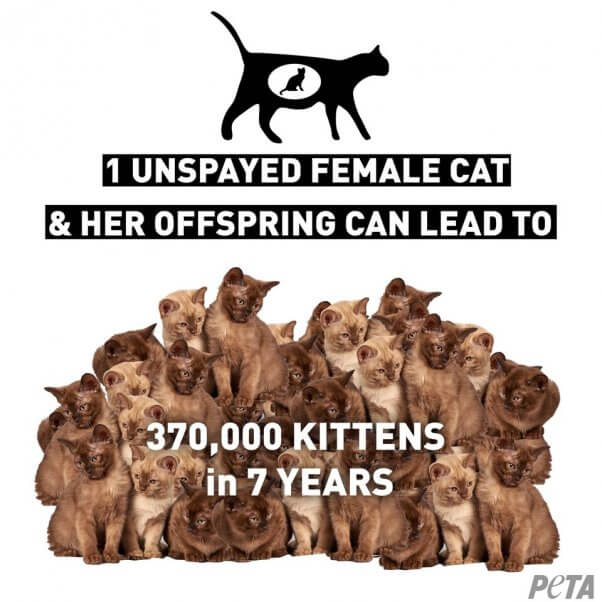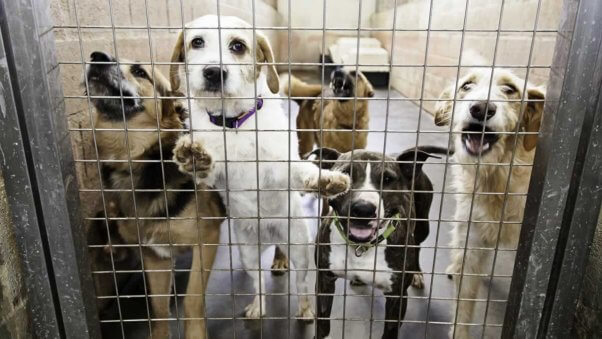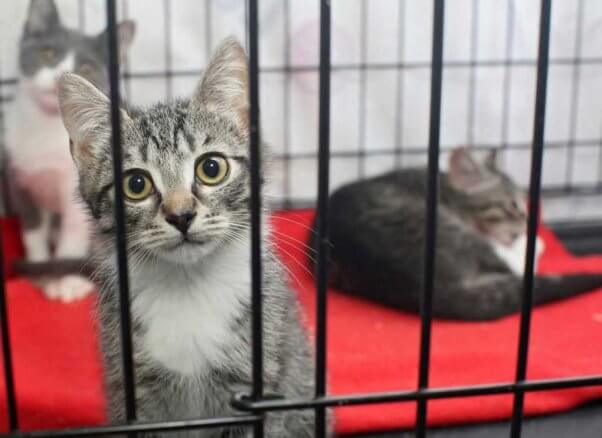Debate Kit: Should All Companion Animals Be Spayed and Neutered?
The companion animal–overpopulation crisis and the importance of spaying and neutering animals are hot topics in classrooms and among members of the public. We know that many schools assign debates on topical issues in order to help their students learn to speak and write persuasively, develop research skills, and recognize the multiple sides of a controversial or multifaceted issue—and the question of how to reduce animal homelessness and suffering is certainly such a topic. This debate kit has a list of resources that can be shared with students to help them make the argument that spaying and neutering companion animals should be mandatory in order to help stop the overpopulation crisis and reduce the need to euthanize animals in shelters.
Resolved: Spaying and neutering companion animals is vital to ending the animal-overpopulation crisis, saving taxpayer dollars, and benefitting animals’ health.
Make an Argument
Every year in the U.S., more than 6 million lost, abandoned, and unwanted dogs and cats enter animal shelters, and approximately 2 to 3 million of them (including many who are healthy, young, and adoptable) must be euthanized because of a lack of responsible, permanent homes for them. The single most important thing that humans can do to save cats and dogs from the suffering and death caused by their overpopulation is to spay and neuter them. Spay/neuter surgeries are a routine, safe, and affordable way to prevent thousands of animals from being born into an already overpopulated world. Statistics show what a difference spaying and neutering makes: Just one unaltered female dog and her offspring can produce 67,000 puppies in only six years, while one female cat and her offspring can produce a whopping 370,000 kittens in only seven years.

Each year, communities spend millions of taxpayer dollars dealing with the problems that the failure to spay and neuter causes. The expense of rounding up stray animals as well as feeding and housing those who are abandoned is much, much higher than the one-time cost of a spay or neuter surgery—and many communities offer low-cost or free spay/neuter clinics. Areas with mandatory spay/neuter laws have reported a significant reduction in the number of animals who are taken to their facilities and subsequently euthanized, which shows that spaying and neutering animals saves lives.
Spaying and neutering benefits animals’ health and behavior, too. For females, spaying eliminates the stress and discomfort that they endure during heat periods, removes the risk of developing uterine cancer, and greatly reduces the risk of developing mammary cancer. For males, neutering prevents testicular cancer, reduces the risk of developing prostate cancer, and makes them far less likely to roam or fight. Sterilized animals live longer in general and are less likely to contract deadly diseases, such as feline AIDS and feline leukemia, that are spread through bodily fluids. Sterilization also reduces or eliminates undesirable, aggressive types of behavior such as biting and urine marking as well as hormone-related moodiness.
When animals aren’t spayed or neutered, many unwanted puppies and kittens are abandoned and left to suffer and struggle to survive on the streets, abused by cruel and neglectful people who aren’t meeting their basic needs, or euthanized in animal shelters. And while euthanizing otherwise adoptable animals is heartbreaking, warehousing them in so-called “no-kill” shelters leaves them to endure an even worse fate—in these facilities, they’re kept in cages for weeks, months, or years on end and often go insane as a result of loneliness and confinement.

Spaying and neutering can change this. Cities and counties all over the country are aggressively addressing the animal-overpopulation crisis by passing successful mandatory spay/neuter laws and requiring everyone who chooses not to spay or neuter to pay a large breeder’s fee. Guardians can do their part by spaying and neutering their animal companions, supporting mandatory spay/neuter legislation, and always adopting animals from shelters—never buying them from breeders or pet stores that continue to contribute to the overpopulation and suffering of cats and dogs.
Become an “Expert”
Use these resources to research the impact that spaying and neutering has on animal companions’ health and well-being and to prepare logical arguments in favor of sterilization:
- Animal Companion Overpopulation
- Detailed Discussion of State Spay and Neuter Laws
- Introducing PETA’s ABC Campaign
- Current Spay-and-Neuter Ordinances
- Spay/Neuter Your Pet
- Top 10 Reasons to Spay or Neuter Your Pet

Build Your Case
Use the resources below to gather evidence and examples to support your position that animal companions should be either spayed or neutered.
Research Articles, Scholarly Articles, and Investigative Analysis
- A Mandatory Spay/Neuter Ordinance in San Francisco: The Solution to San Francisco’s Other Homeless Problem
- Addressing the Problem of Pet Overpopulation: The Experience of New Hanover County Animal Control Services
- Animal Population Control Study Commission
- Few Owners Use Free Spay-Neuter Option
- Fixing the Problem: Officials Say Spay, Neuter Law Is Necessary
- Impact of a Bilingual Mobile Spay/Neuter Clinic in a U.S./Mexico Border City
- Pet Tips: Why It’s Important to Spay or Neuter
- Spay/Neuter Ordinances Should Be Adopted Nationwide
- Spayed or Neutered Dogs Live Longer
- Spaying and Neutering May Contribute to Longer Lifespans, According to Banfield Pet Hospital Report
Statements From Veterinarians and Experts
- MMVA Position Statements
- Pet Health 101
- Sorting the Science on Spay and Neuter Surgeries
- Spay or Neuter Your Pet
Examples of Successful Spay/Neuter Ordinances
- Experience Reveals That Spay-Neuter Laws Do Work
- SB County: Spay/Neuter Law Expanded
- S.F. Sterilization Law Successful in Reducing Pit Bull Population
- Spay and Neuter Ordinance Working ‘Slowly But Surely’
- Spay-Neuter Law Works in Santa Cruz
- Towns Find Spay Ordinances Reduce Numbers of Stray Animals
Additional Information Regarding Spaying and Neutering
- Celebs Speak Out to End Animal Homelessness—Spay/Neuter Today
- Four Women Forming New Group to Push Local Spay-Neuter Initiative
- Pledge to End Animal Homelessness!
- Now Is the Time to Spay and Neuter
- Saginaw Animal Control to Offer Transport Service for Low-Cost Neuter, Spay
- The Life Saved by Spaying Might Be Your Own Dog’s
- The Most Important Thing You Can Do For Your Pets
- Volunteer for Animal Birth Control: Are You Ready to Save Lives?

Find Solutions
Use these resources to build a proposal that offers solutions for problems that companion animals currently face and for those that could allegedly arise if spaying and neutering were mandatory:
- A Mandatory Spay/Neuter Ordinance in San Francisco: The Solution to San Francisco’s Other Homeless Problem
- Animal Population Control Study Commission
- Experience Reveals That Spay-Neuter Laws Do Work
- Spaying and Neutering: A Solution for Suffering

Anticipate Counterarguments and Prepare Rebuttals
Visit the websites of those who oppose mandatory spaying and neutering to see their justifications for allowing more animals to be born when there is already an overpopulation crisis. Investigate what some individuals and industries stand to gain when companion animals aren’t spayed or neutered, and think critically about their motivations. Also, find out who else is negatively affected by mandatory spay/neuter legislation (e.g., animal breeders and pet stores). Create a list of things that those who oppose spaying and neutering—despite the severe overpopulation crisis and the health benefits of the surgery—typically assert. The resources in this kit can help students respond to those counterarguments.

Additional Resources
Websites and Programs
- Current Spay-and-Neuter Ordinances
- ‘Fixing’ Animal Homelessness
- Low-Cost Spay/Neuter Programs
- PETA’s Mobile Clinics Division
- Prevention Is the Ultimate Compassion
- Spay/Neuter Help
Infographic and Photos
Videos
- 370,000 Reasons to Spay and Neuter: An Animated Short
- Did You Know? Spay-and-Neuter PSA
- peta2’s ‘Everyday Dogs’ PSA
*****
Have students use the resources in this kit to prepare an affirmative argument that states why spaying and neutering companion animals should be mandatory. The resources will help them to support their position with scientific, ethical, and philosophical reasoning.
Want free educational posters and stickers for students to use during their debates? E-mail us at [email protected].
Do your students need to conduct an interview as part of their research? Staff members from PETA’s student sector are available to speak with students via phone, Skype, or e-mail and to answer questions about our stance on spaying and neutering. Have students e-mail us directly at [email protected]—or if you’d like to contact us on their behalf, please fill out the form below, and we’ll arrange for them to speak with a representative.
By submitting this form, you’re acknowledging that you have read and agree to our privacy policy and agree to receive e-mails from us.






